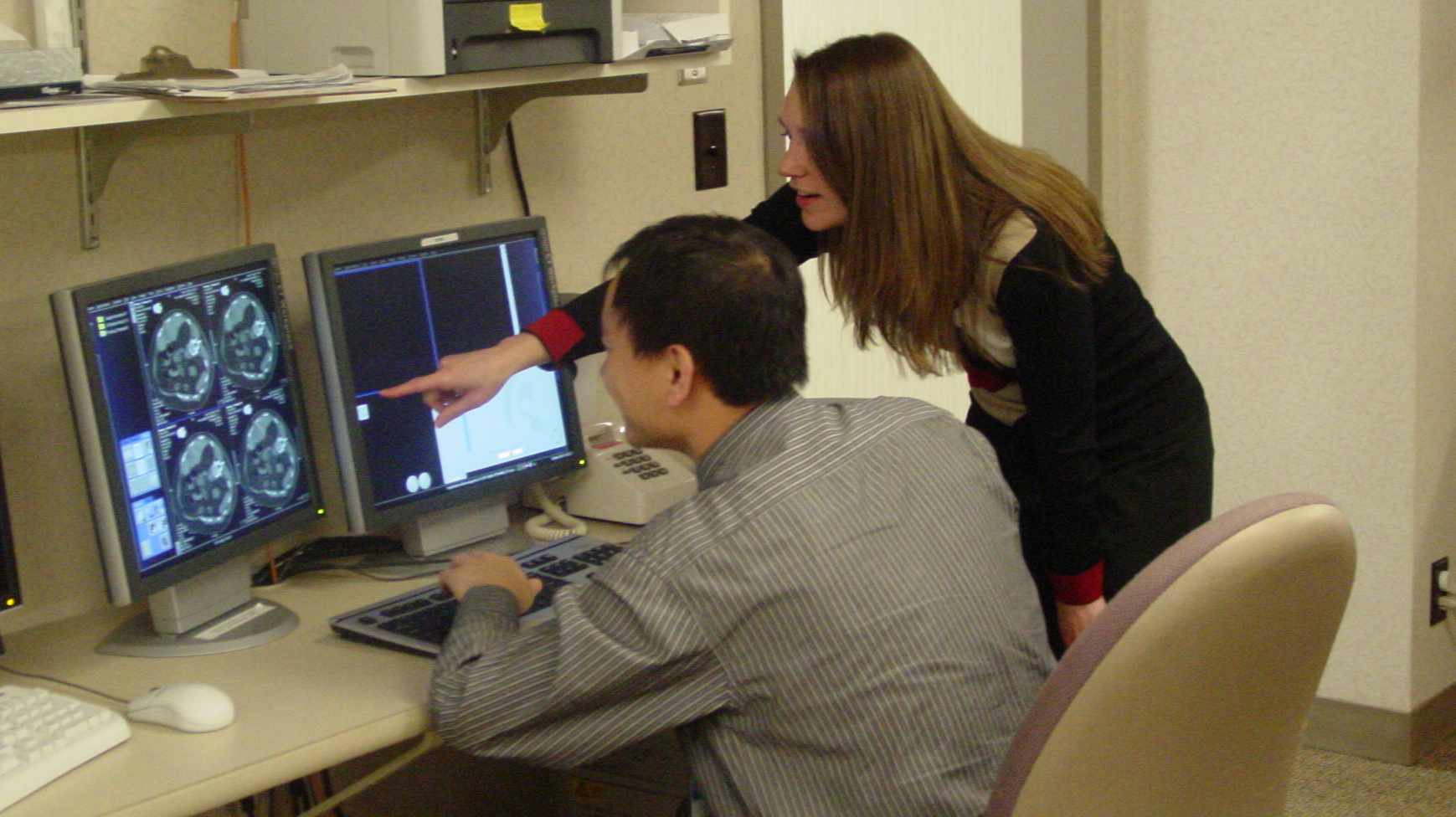-
Featured News
Mayo Clinic innovation drives CT practice forward
 ROCHESTER, Minn. – Innovation has been an integral part of the Mayo Clinic Department of Radiology’s CT program since 1973, when it installed the first CT scanner in North America.
ROCHESTER, Minn. – Innovation has been an integral part of the Mayo Clinic Department of Radiology’s CT program since 1973, when it installed the first CT scanner in North America.
Mayo physicians and researchers continue to drive forward progress in the field, particularly through the work of the CT Clinical Innovation Center, which was founded in 2004 to develop and evaluate new CT technology, clinical applications and dose-reduction techniques — all to improve patient care. New technologies have allowed for scanning new groups of patients, noninvasively diagnosing new types of diseases, and reducing the dose of radiation or the dose of X-ray dye used in CTs.
“This is part of the philosophy of our department — that we take technology to the next level. We want to blaze a trail for others to follow,” says Cynthia McCollough, Ph.D., founder and director of the center, and professor of Medical Physics and Biomedical Engineering.
Getting to that next level requires collaboration with physicians, physicists, surgeons, radiologists and industry experts, she says.
MEDIA CONTACT: Ethan Grove, Mayo Clinic Public Affairs, 507-284 5005, newsbureau@mayo.edu
“It used to be that radiologists worked in the shadows of the hospital, in small dark rooms, but I’m a gastrointestinal radiologist and, sometimes, I feel more a member of the Division of Gastroenterology, because of the people I’m talking to every day, than I do of the Department of Radiology,” adds Joel Fletcher, M.D., who is the medical director of the CT Clinical Innovation Center. “Radiology is very integrated into the diagnosis and treatment of disease now — more so than ever before.”
This year, Mayo Clinic physicians and researchers working with the CT Clinical Innovation Center have contributed 37 presentations to the Radiological Society of North America’s Scientific Assembly and Annual Meeting in Chicago, which runs through Friday, Dec. 2.
“This is a testament to just how busy we are and how enthusiastic we are in bringing forward new ideas and then sharing them with the larger community,” Dr. McCollough says.
Six of the Radiological Society of North America presentations deal with a new type of CT scanner, called a photon-counting CT — one of only three in the world. The scanner offers lower noise levels, better spatial and contrast resolution, and more quantitative information. The scanner was placed at Mayo Clinic as part of a bioengineering research partnership award from the National Institutes of Health.
“We have a rare opportunity to participate in developing the future of CT technology ― to find out what the new scanner does well and what it needs to do better,” Dr. McCollough says. “We’re working very closely with the manufacturer to move this technology forward and are already scanning patients under an approved research protocol. And ... we’ll be making our scanner available to other researchers to perform their work, so that we can, together, move this technology forward to become the next generation of CT scanners.”
https://www.youtube.com/watch?v=L8hmTdSrR0U
To schedule an interview with Dr. McCollough or Dr. Fletcher, contact Ethan Grove, Mayo Clinic Public Affairs, 507-284-5005 or newsbureau@mayo.edu.
###
About Mayo Clinic
Mayo Clinic is a nonprofit organization committed to clinical practice, education and research, providing expert, whole-person care to everyone who needs healing. For more information, visit http://www.mayoclinic.org/about-mayo-clinic or https://newsnetwork.mayoclinic.org/.







